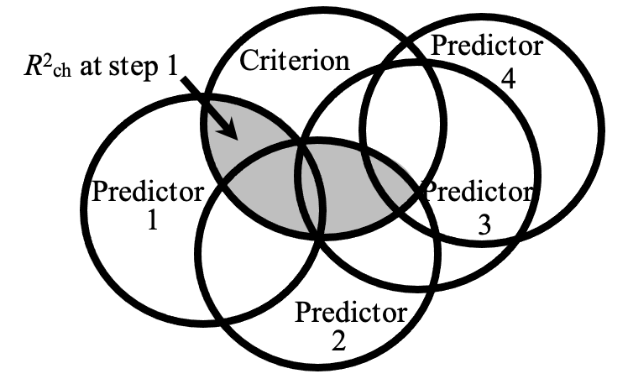Ψlogical
Testing…
Industrial & Business Settings
🧼🚿 Cleaning up 🚿🧼
Lectures:
- Dingos present next Tuesday!! 🦊
- rubric available here
- Pacing down to 1 chapter per week
Project:
- data?

![]()
🔭🌠ASTEROID YR4 PANIC METER!!!🌌💥



Industrial & Business Settings

Personnel Psychology
focus is on selection of individuals into positions at work – typically this is informed by pre–employment testing
- selection also takes place internally (e.g., promotion)
- selecting “out” also informed by tests (e.g., evaluation of employee performance)
Note
…aka Industrial Psychology – this is the historical genesis for the broader field of Industrial & Organizational Psychology1
the Employment Interview
Very common with US jobs – typically only a subset of applicants are chosen to interview
- opportunity to meet each other
- both sides have incentive to be deceptive:
- make company attractive
- make self look positive
Structured – considered a “test” (standardized content, scoring & procedure)
Unstructured – traditional unscripted conversation
Current procedures
Before tests are used in an employment context, I/O Psychologists often first consider how well the current procedures are working
- “dichotomous” decision here is hire or not hire
- possibly informed by cut score (minimally acceptable threshold)
- also dichotomize job performance (good vs. bad)
Can look at combination of “prediction” and “outcome” just like we do with statistics (decision table):

Base Rates & Hit Rates
“Hit” rate is the percent of cases in the “Good Decision” categories
“Base” rate is the percent of cases currently considered successful1

Taylor–Russell Tables
Can help with the decision of whether or not to try something different regarding employee selection (e.g., is the cost of doing something different worth it?)1
- old idea that validity alone is insufficient when considering whether or not to adopt a selection test (Taylor & Russell, 1939)
- selection ratio is: \(\frac{N_{hires}}{N_{applicants}}\)
- using valid test has more utility if selection ratio is low (closer to 0 than 1)
Utility Theory 💰💰💰
Modern adoption of the Taylor & Russell (1939) ideas – decision of whether or not to adopt a test should be based on more information than just “is it a good test?”
- several different calculations exist, but most present “utility” of using test in 💲 units
- great idea, but not as popular with clients as we all thought it should be 🤔
- taking base rates, selection ratios, test validity, & various costs into consideration, how much money would be saved if the test were to be used?
Value–added assessments
not everything Personnel Psychologists do is selection into the organization – performance appraisal is another common function
- value–added approach to performance appraisal bases administrative decisions (promote, raise, demote) on work outcomes
- outcomes might include subordinate performance
- statistical modeling can project expected output & administrative decisions made based on actual vs. expected values
Incremental Validity \(\Delta\)
unique information the focal test gives you (“above & beyond” other information)
- typically assessed via hierarchical regression:
- procedure that occurs in steps
- Step #2 statistic - Step #1 statistic = \(\Delta\) statistic
- \(\Delta\) = incremental validity
- merely knowing 2 validities from 2 tests is not sufficient:

Myers–Briggs Type Indicator
Somewhat notorious assessment within Psychology – extremely unpopular with I/O Psychologists
- based on Jung (1921)’s theory of psychological types
- introversion – extraversion a primary distinction
- additionally, there are 4 main ways people experience the world:
- sensing, intuiting, feeling, thinking
Note
Briggs & Myers added the 4th dimension (judging/perceiving)
Wonderlic Personnel Test (WPT)
quick (12–minute) g–loaded “mental ability” test
- used for many years to help inform NFL draft selection1
- many other tests (physical & psychological) also administered at NFL Scouting Combine
- many different forms exist because of security concerns
- traditional construction – starts with easier questions and gets progressively more difficult
Work Environment
typically assessed via measures of culture or climate
- Culture – shared values & practices within an organization
- Climate – shared perceptions & beliefs that employees have of organization

Job Analysis
methodical process to describe characteristics of the job (e.g., checklist, interviews, critical incidents)
- identifies tasks & duties (responsibilities) that define the job
- typically goes into job description & performance assessment
- often also identifies knowledge, skill, & abilities that help performance within function
- typically informs which pre-employment tests to use
Person–Situation Interaction
a perspective that is focused on how different psychological characteristics interact with different environments to explain human behavior
- just because someone is “smart” or “nice” doesn’t always explain how they act
- just because someone is at church or sporting event doesn’t always explain how they act
- interaction = “it depends”

____________ validity reflects the unique value provided by an additional test
- incremental
- incidental
- incredible
- influential
A “correct rejection” goes into the ________ category
- hit rate
- base rate
- utility theory
- selection ratio
Number of positions being filled divided by the number of applicants is the ___________
- selection ratio
- hit rate
- base rate
- utility theory
The construct most likely being assessed with the Wonderlic is _______
- g
- Conscientiousness
- Extraversion
- Motivation
The methodical process applied to understand “what workers do” is called __________
- job analysis
- utility analysis
- incremental validity
- performance assessment
Assessment groups:
Starting 4/24 (Thursdays):
| Al Pacas🦙 | Belugas🐳 | Camels🐫 | Dingos🦊 | Elephants🐘 |
|---|---|---|---|---|
| Vanessa A | Mae F | Sarah J | Sarah M | Hannah T |
| Sabina B | Alaina G | Thomas J | Raelyn R | William T |
| Nathan B | Payton H | Grace K | Ellen R | Jennifer T |
| Maritza B | Elly J | Grace L | Rachel S | Lila W |
| ??? | ??? | ??? | 4/29 | ??? |